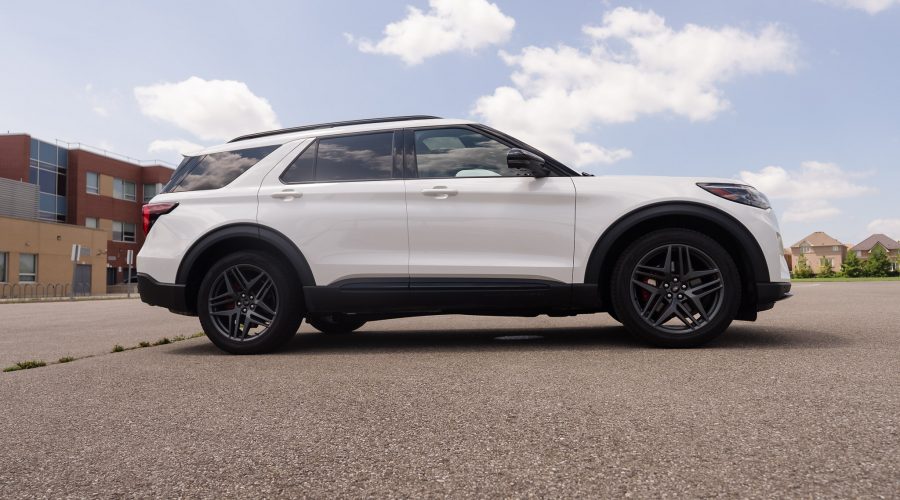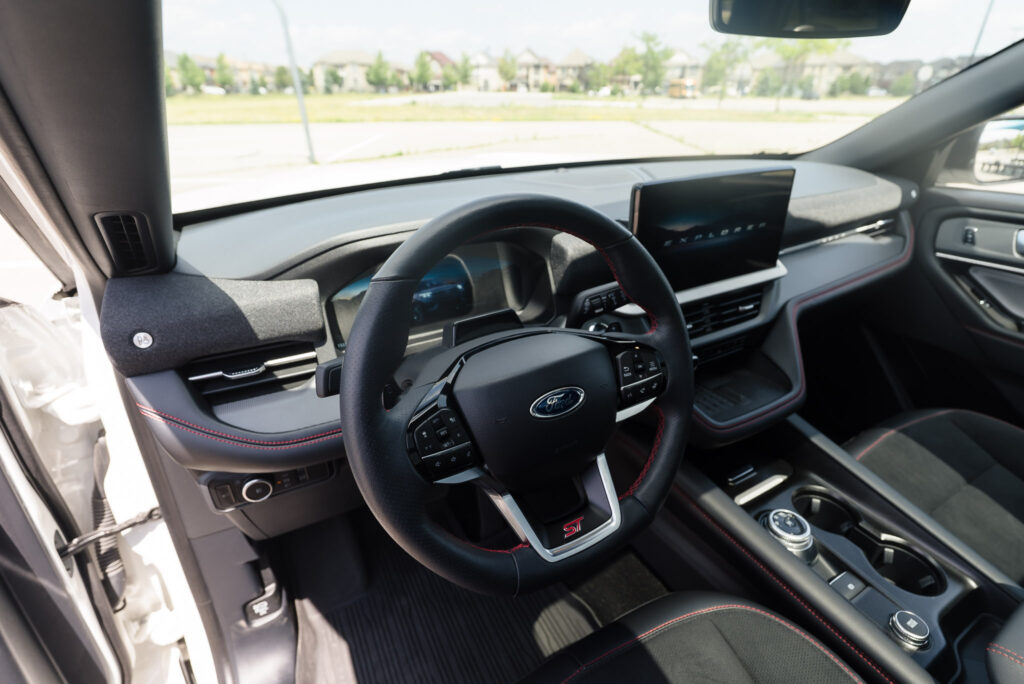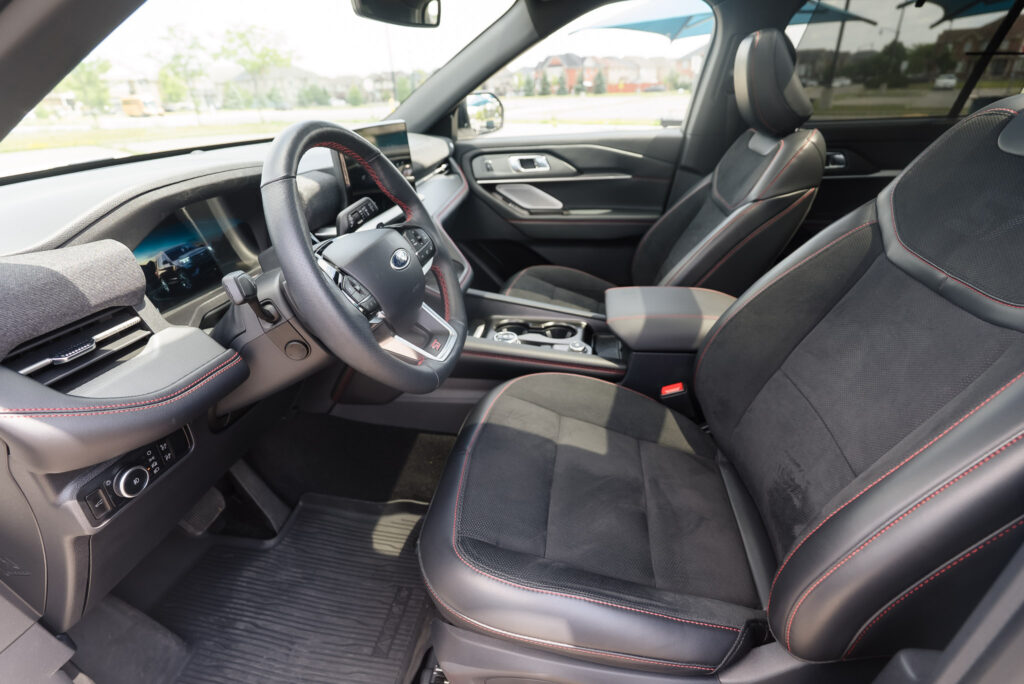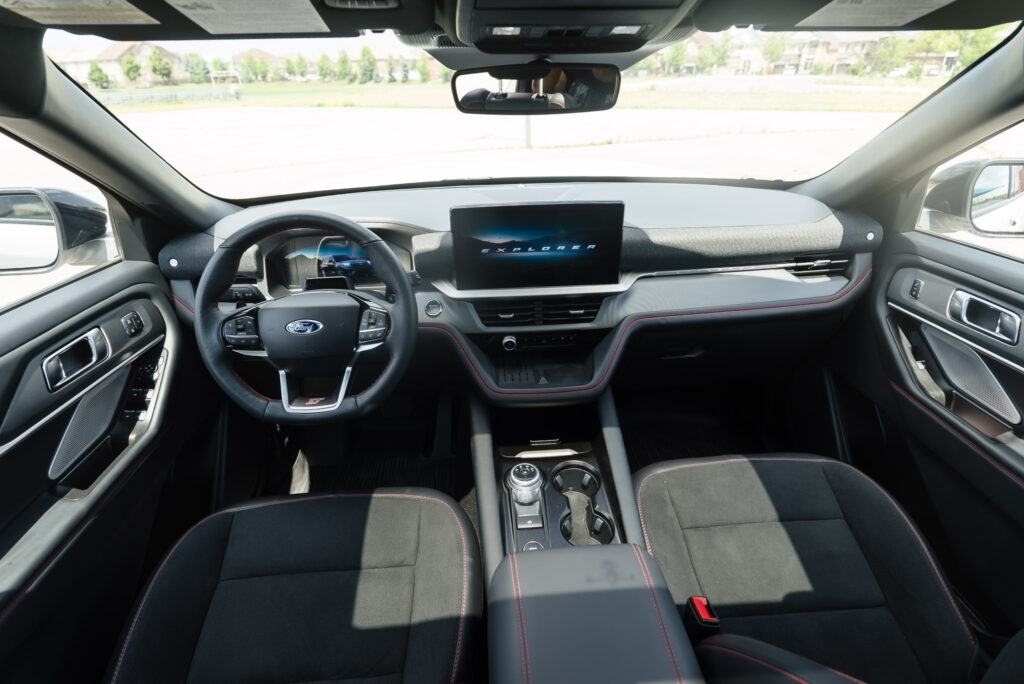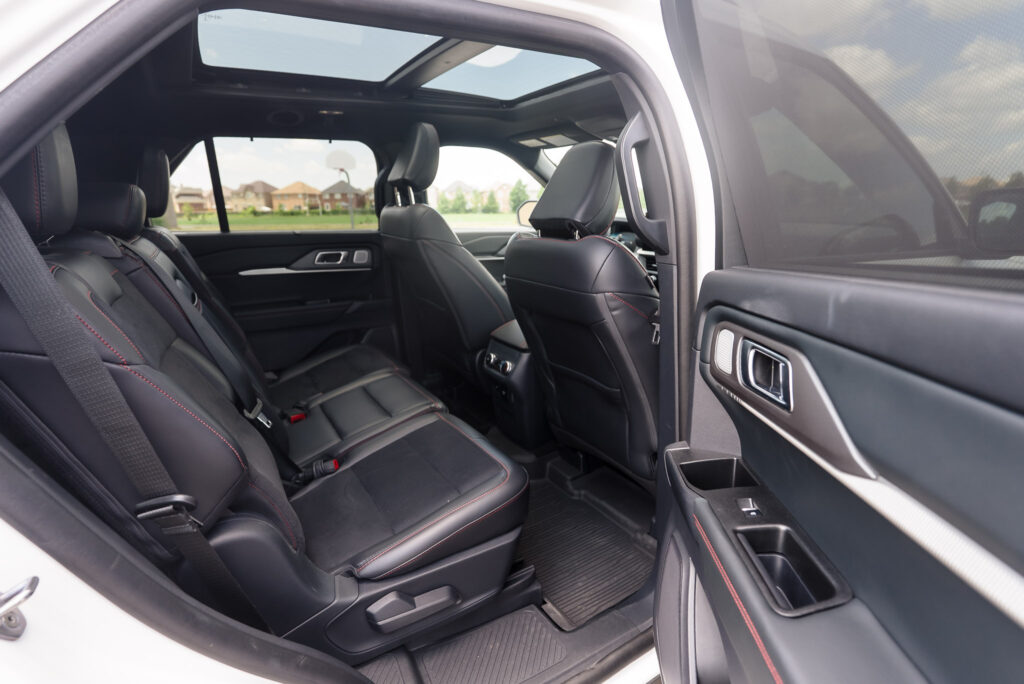It’s hard to believe, but Ford’s Explorer has been patrolling the highways and suburban driveways of North America for 34 years. Launched in 1991, the Explorer has managed to hold its name and place in the midsize SUV segment ever since, even as countless competitors have come and gone. Now in its heavily refined sixth generation, the 2025 Ford Explorer proves why it continues to be a staple in the SUV market—offering a blend of ruggedness, performance, comfort, and cutting-edge technology that few rivals can match.
Ford offers the 2025 Explorer in five trims, starting with the Active 4WD at $49,800 and topping out with the ST AWD ($70,500)—the model I tested. Sitting at the sportiest end of the lineup, the ST is the Explorer at its most daring: bold, powerful, and surprisingly nimble for a big SUV.
Big, Bold, and Unapologetically an SUV
The Explorer is officially categorized as a midsize SUV, though I’d argue it leans toward the “plus-size” end of that scale. It’s one of the largest vehicles in its class, competing head-to-head with the Toyota Highlander, Honda Pilot, and Chevrolet Traverse, and overlapping with secondary competitors like the Jeep Grand Cherokee L, Dodge Durango, Hyundai Palisade, and Mazda CX-90.
Importantly, the Explorer is a true SUV, not a crossover. What’s the difference? A crossover is typically built on a unibody car platform, prioritizing comfort and fuel economy, while a traditional SUV like the Explorer is built on a stronger platform, offering more towing capacity, off-road durability, and rugged character. It’s a distinction that matters, and one reason the Explorer continues to appeal to buyers who want more substance than style alone.
The Explorer is available in either rear-wheel drive (RWD) or all-wheel drive (AWD) and offers seating for six or seven passengers, depending on whether you select captain’s chairs or a second-row bench.
Powertrain Options: Plenty of Muscle
Under the hood, buyers can choose between two engines, both paired with a smooth 10-speed automatic transmission.
- The base engine is a 2.3-litre turbocharged four-cylinder producing an impressive 300 horsepower—more than enough to move this big SUV with confidence.
- For those who crave more punch, there’s the 3.0-litre twin-turbocharged V6 that delivers a stout 400 horsepower, roughly 30% more than the base engine.
My test vehicle, the ST AWD, came with the 400-horsepower V6, and it is, in a word, thrilling. With deep reserves of torque, the ST launches with urgency that feels more like a sports sedan than a family SUV.
Passing power is borderline outrageous—I found myself hitting 140 km/h in the passing lane when I thought I was doing 120. In the wrong hands, this could be a license-losing machine, but in the right hands, it’s a grin-inducing powerhouse.
Behind the Wheel: Smooth Yet Sporty
Despite its size and heft, the Explorer manages to deliver a driving experience that’s both smooth and sporty. The suspension soaks up bumps and rough patches with ease, but there’s still a tautness that makes it feel agile on winding roads. Steering is direct and confidence-inspiring, and the ST trim in particular sharpens things up further with sportier tuning. The combination of comfort and capability is exactly what families—and enthusiasts who don’t want to give up driving fun—will appreciate.
Inside, the cabin strikes a balance between practicality and modern flair. The dashboard layout is friendly and intuitive, with a logical arrangement of controls that don’t overwhelm. It’s an easy SUV to climb into and feel at home with immediately.
Tech That Sets It Apart
Where the 2025 Explorer really flexes its muscles is in the tech department. Ford has debuted its new Android-powered Digital Experience Infotainment System, which seamlessly integrates Google’s suite of apps, including Google Maps, Google Assistant, and the Google Play Store.
While Apple CarPlay and Android Auto are still available, they’re starting to look dated compared to the Explorer’s native Google interface. The system is smooth, attractive, and easy to navigate—frankly one of the most impressive infotainment setups on the market right now.
One standout feature is Ford’s Zoom integration. Drivers can join virtual meetings right from the vehicle: pull over, and you can even participate with video using the cabin camera; stay on the move, and you can still join audio-only. For busy professionals, this is not just a gimmick—it’s genuinely useful.
Then there’s BlueCruise, Ford’s semi-autonomous driving suite. It combines adaptive cruise control, lane centering, and even lane-change assist to deliver a hands-free driving experience on compatible highways. While not a replacement for driver attention, it makes long-distance trips far less tiring and stacks up well against similar systems from GM and Tesla.
The Cop Car Factor
Now, let’s address an elephant in the room: the Explorer’s association with law enforcement and first responders. For years, police departments, fire services, and other agencies have relied on the Explorer for its durability and capability. That’s a testament to the SUV’s toughness, but for some buyers, it’s also a drawback.
Do you really want your family SUV to look like a decommissioned highway interceptor? For some, that association may “cheapen” the Explorer compared to competitors that have no such baggage. On the other hand, plenty of buyers see it as a positive: if police forces trust the Explorer for daily duty, that’s proof of its reliability and ruggedness. It really comes down to personal perspective.
Final Thoughts
The 2025 Ford Explorer is a compelling package. It blends real SUV strength with modern-day tech and creature comforts, offering something for just about everyone—whether you’re hauling kids to hockey practice, carving through highway traffic in the ST, or joining a Zoom call on the go.
Yes, the police association might be a sticking point for some shoppers. But for others, it’s exactly why the Explorer is worth owning. After all, if it’s good enough to serve and protect, it’s probably good enough to handle your daily commute, family adventures, and weekend road trips.
Ford hasn’t reinvented the Explorer for 2025, but it didn’t need to. Instead, it refined a proven formula and added enough tech and muscle to keep it fresh and competitive. After 34 years, the Explorer nameplate still has plenty of life—and excitement—left in it.
James Matthews is the President, General Manager and Co-Founder of LeaseBusters. James launched LeaseBusters in 1990 and is considered one of Canada’s leading experts on new vehicle leases, lease-take-overs and vehicle lease (re)marketing. James can be reached directly at jmatthews at leasebusters.com

